






[Home] » [Press Release]
Developed millimeter-wave band local 5G software radio system using open source and directional control antenna arrays
| Digital Communications Laboratory headed by Professor Hiroshi Harada of the Graduate School of Informatics, Kyoto University (hereafter referred to as Kyoto University), has developed a millimeter-wave band (28 GHz band) antenna array. This band uses open-source software, which enables software configuration and modification of various wireless parameters that realize 5G NR and software modification of the antenna beam direction. The system uses a millimeter-wave band local 5G system with software wireless technology to realize a 5G NR system while controlling the directivity of the antenna by using an array. Consequently, obtaining parameters for antenna control and transmission to realize local 5G in indoor environments, such as offices and factories, and outdoor environments, including V2X (vehicle-to-everything), which connects vehicles to everything, will be easy, thereby expediting the proliferation of millimeter-wave band local 5G systems. |
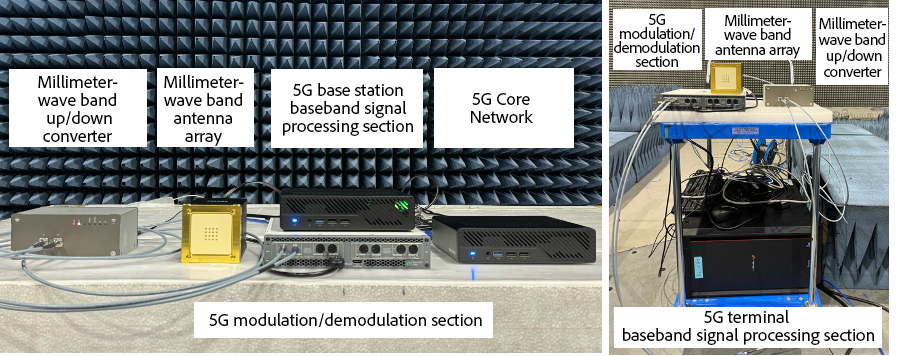
|
Background
Currently, local 5G systems are becoming popular, with mobile carriers and other diverse entities, including local enterprises and municipalities, utilizing 5G as a self-operated wireless communication network within confined areas, primarily inside buildings or premises. Among them, local 5G systems using the 28 GHz band, called millimeter-wave band local 5G systems, can utilize a wide frequency bandwidth and are expected to create new applications with the characteristics of 5G systems, such as ultra-high speed, large capacity, low latency, and multiple simultaneous connections. However, millimeter-wave band local 5G systems face the challenge of shorter transmission distances owing to shorter wavelengths compared to local 5G that uses 6 GHz band frequencies, known as Sub 6. Therefore, antenna arrays are used to configure antenna beams, vary their directivity, and use the antenna gain to increase the transmission distance. This millimeter-wave band local 5G system, contrary to the wireless LAN represented by Wi-Fi, is based on a radio station license, which enables the stable use of communication speeds. However, the system has not achieved explosive penetration, owing to the extremely high price of radio equipment, insufficient control of antenna beams to ensure a stable communication area, and other issues. To promote the spread of this millimeter-waveband local 5G, developing small wireless base stations and core networks that are similar to Wi-Fi access points is necessary. Furthermore, it is necessary to develop millimeter-wave local 5G systems that can be linked to other 5G systems, where the antenna directivity for transmission and reception can be freely changed by users. Kyoto University has successfully developed a compact local 5G system in the VHF and 4.9 GHz bands using open-source 5G technology provided by the OAI (OpenAirInterface) Software Alliance, of which Kyoto University is the first and only university member in Japan. However, there have been no developments in millimeter-waveband local 5G radio systems using open-source and directional control antenna arrays.
Research Methods and Results
We developed a millimeter-waveband local 5G system (core network, base station, and terminals) using software radio technology that enables 5G NR systems while independently controlling the antenna directivity for transmission and reception. (Figure 1). The following four main areas were researched and developed:
- Open-source software enables 5G NR (hereinafter referred to as 5G software) and equips baseband processing functions of 5G NR base stations (CU and DU functions), core network functions, and terminal baseband processing functions (UE functions) in a general-purpose PC. In addition, this PC is converted to 28 GHz band signals and connected to a millimeter-wave band antenna array, whose antenna beam direction can be changed to develop a 5G software wireless system. (An overview of the system is shown in Figure 2, and its basic specifications are listed in Table 1.)
- New software was added to the 5G software to control the directivity of the antenna beam according to the timing of transmission and reception determined for each timeframe of the 5G system (Figure 3).
- Added to the 5G software that processes signals for this base station is a function to realize the UTW-OFDM method, which significantly suppresses the out-of-band leakage power and enables the high-density use of frequencies (Figure 4).
- A millimeter-waveband local 5G system was successfully operated using a core network, base stations, and terminals to transmit data by freely changing the beam direction independent of the transmitter and receiver.
The 5G-NR radio was developed using an open-source software provided by the OAI Software Alliance. The antenna array for directional control utilized TMYTEK's BBox, a 4×4 16-element antenna array with ±45 deg control in both the horizontal and vertical directions. The UTW-OFDM method strongly suppresses discontinuities between adjacent symbols by shaping the waveform in a long time window, which is the cause of unwanted out-of-band emissions that caused the degradation of bandwidth utilization efficiency, in contrast to the CP-OFDM method used in 5G (Figure 4). Using the developed millimeter-waveband 5G base station, terminal, and core network, experiments were conducted to measure the maximum data transmission rate (throughput) when the base station and terminal were installed in an anechoic chamber, and the beam direction of the base station was changed using the control software (Figure 5). In the experiment, the distance between the base station and the terminal was 9 m. When directly connected without an antenna, a transmission rate of 57 Mbps was achieved with a bandwidth of 50 MHz owing to the signal-processing capability of the terminal side. The experimental results showed that a maximum data transmission rate of 50 Mbps was achieved on the downlink from the base station to the terminal. Furthermore, 38.2 Mbps was achieved on the uplink from the terminal to the base station when the antenna beams of the base station and the terminal were facing each other. However, as the directivity difference between the transmitter and receiver increased, the maximum data transmission rate was significantly reduced when the antenna beams of the transmitter and receiver were shifted by ±15° (Figure 6).
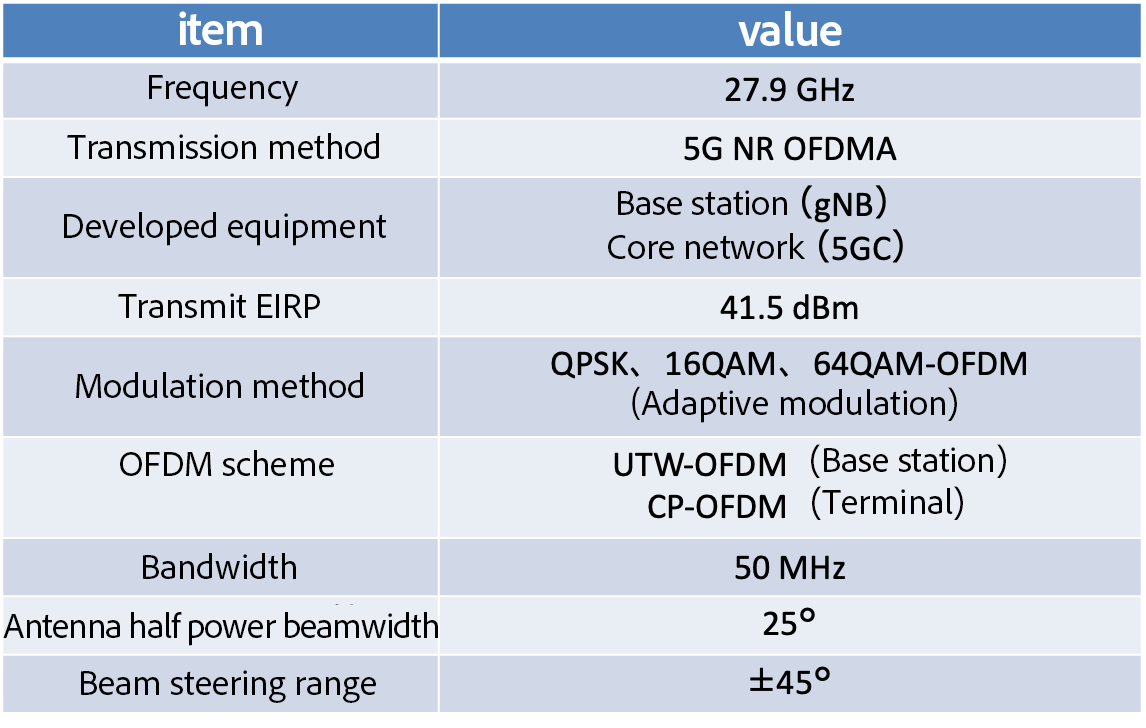
|

|
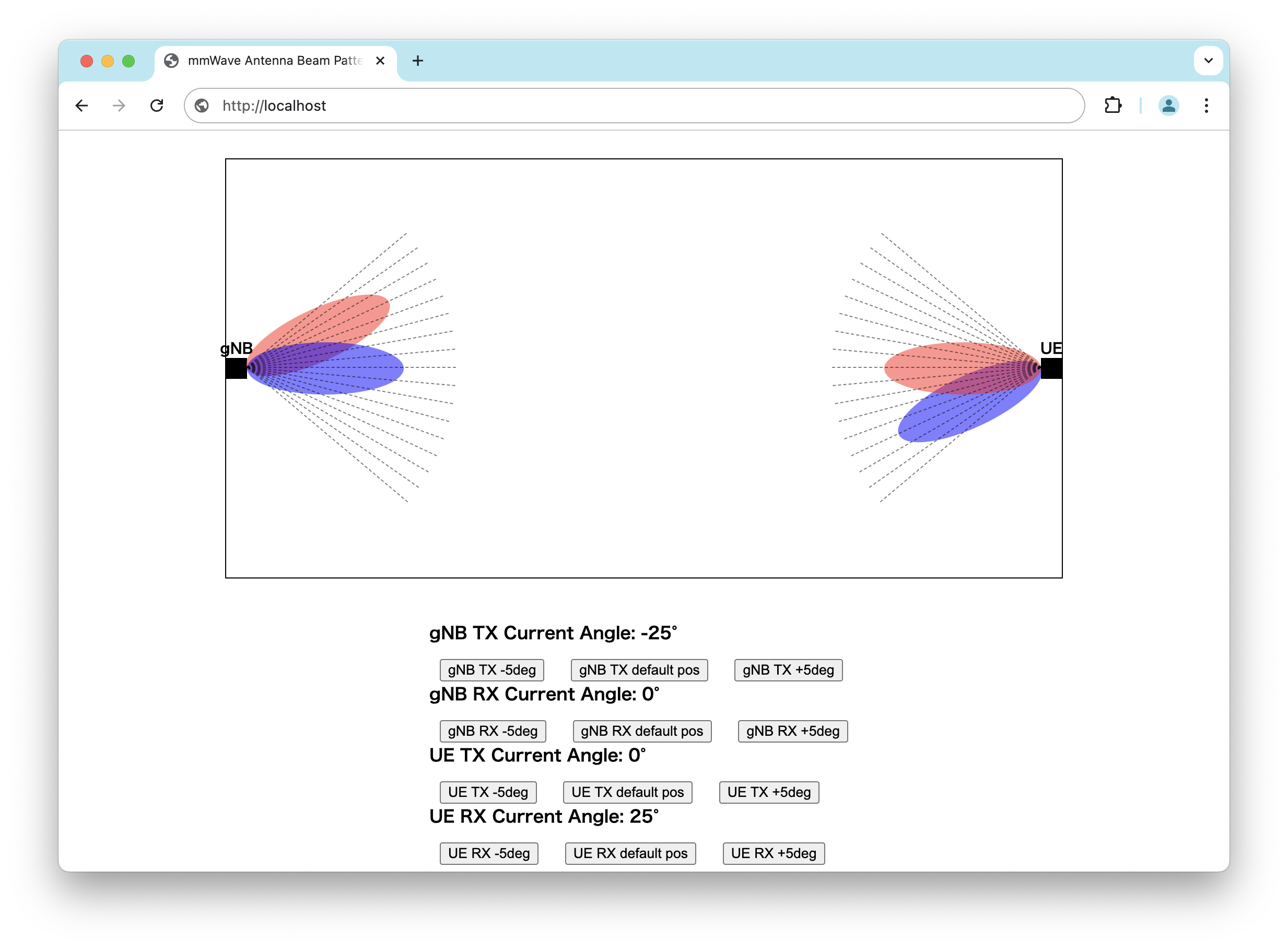
|
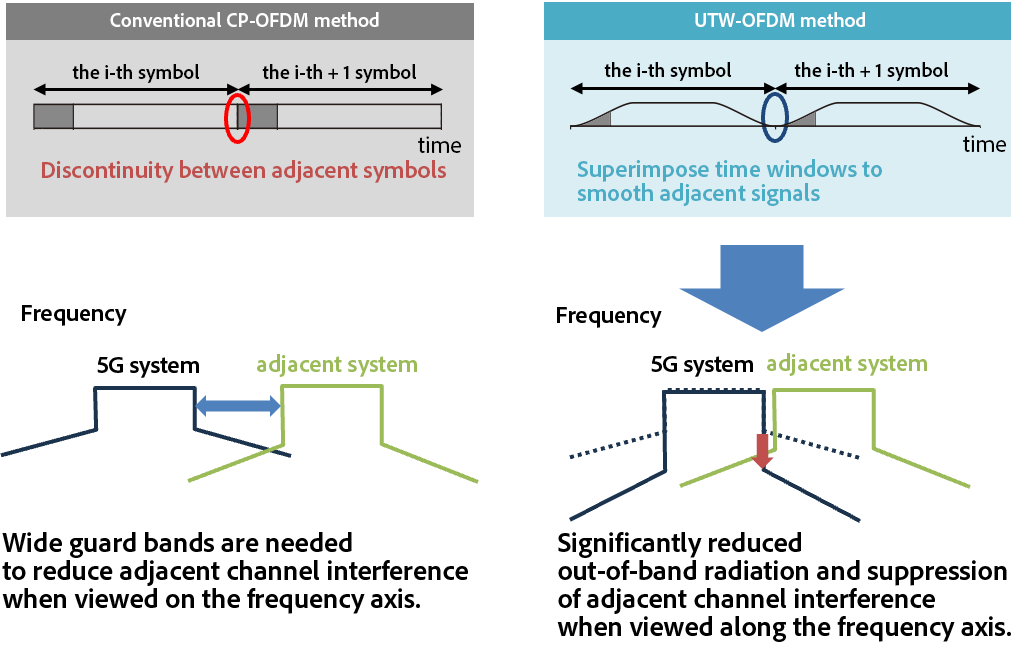
|
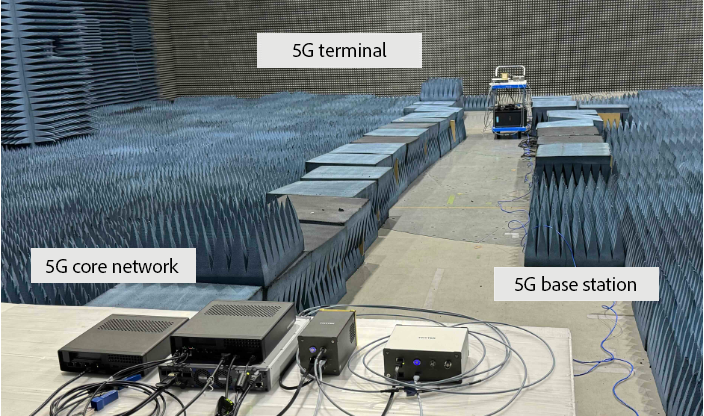
|
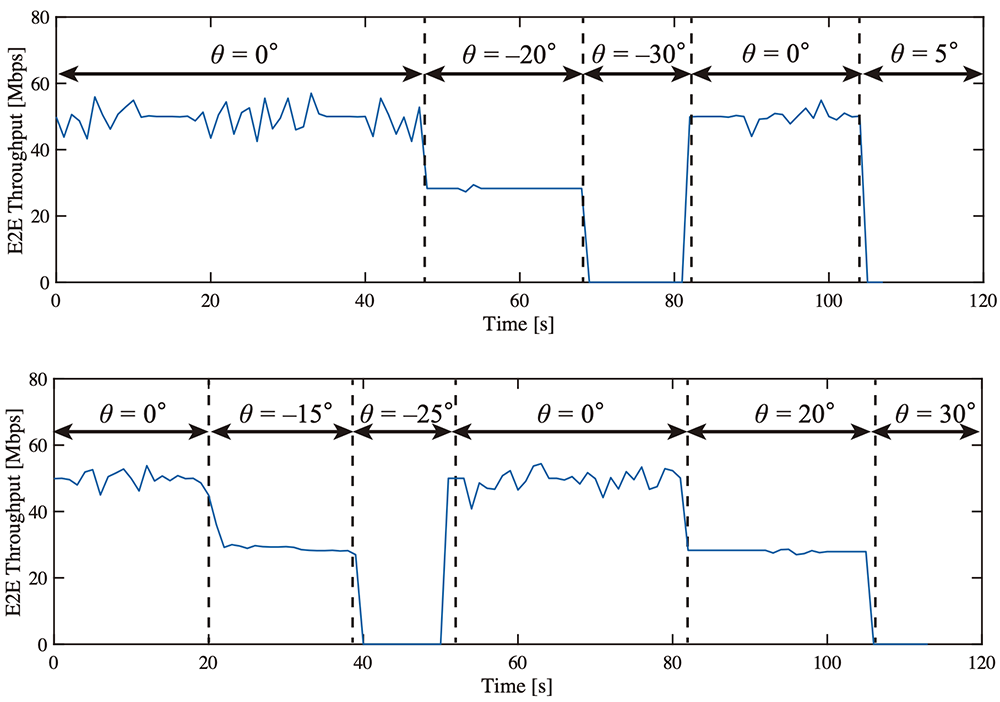
|
Impacts and Future Plans
With this achievement, it will be easy to obtain parameters for antenna control and transmission to realize local 5G in indoor environments, such as offices and factories, and outdoor environments, including V2X, which connects vehicles and everything else. Using these optimal parameters, the spread of millimeter-waveband local 5G systems can be accelerated. In the future, we will connect with commercial terminals, evaluate the transmission characteristics in various application fields using radio equipment, and aim to commercialize inexpensive and stable 5G systems based on software radio technology.
Acknowledgements
This research was conducted as part of a research project commissioned by the National Institute of Information and Communications Technology (JPJ010017C07501) and the Ministry of Internal Affairs and Communications (JPJ000254). Experiments were conducted in an anechoic chamber at the Microwave Energy Transmission Laboratory (METLAB) of the Research Institute for Sustainable Humanosphere, Kyoto University.
Terminologies
» 1. local 5G
Unlike nationwide 5G services provided by cell phone operators, 5G systems are installed, licensed, and self-operated by various entities, such as companies and municipalities, in their own buildings and premises in response to individual regional and industrial needs. Currently, the 4.9 and 28 GHz bands are allocated as frequencies for local 5G.
» 2. 5G New-Radio
It is a radio interface adopted in 5G and standardized by the International Standardization Organization 3GPP (3rd Generation Partnership Project). This enables flexible signal generation for various applications.
» 3. OAI(OpenAirInterface) software Alliance
The OAI Alliance was established in 2014, aiming to build 5G using open-source software. By installing the 5G NR software provided by the OAI Alliance on a PC or other device, it is possible to realize the signal processing functions of the 5G system (core network, base station, and terminals) established by the 3GPP standardization organization. By modifying and adding software, various research and development activities can be conducted. Kyoto University was the first university in Japan to join the alliance officially.
|
Contact Information |
|
[For Research Inquiries] |
|
[For Press and Media Inquiries] *Please change [at] to @ |